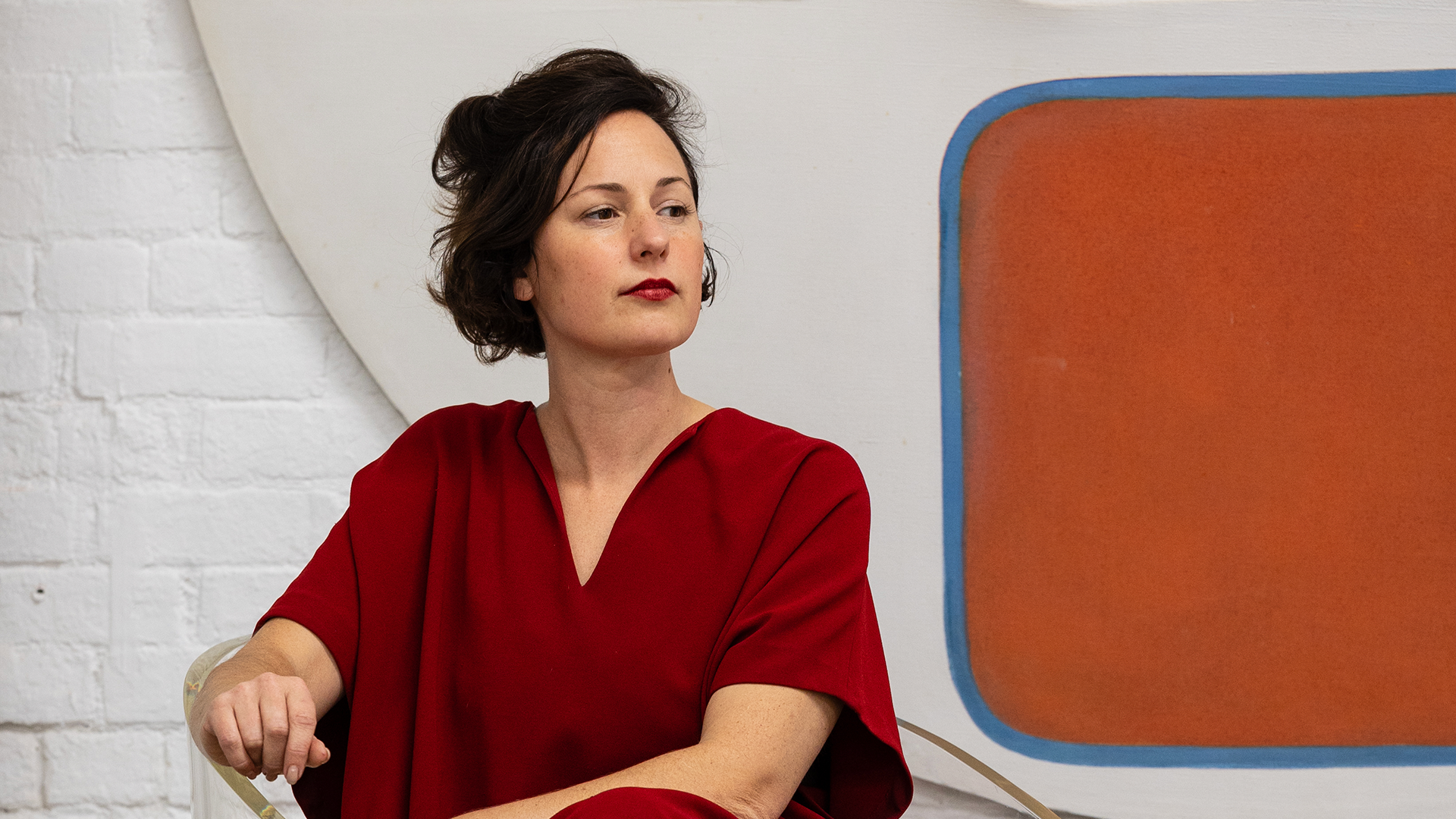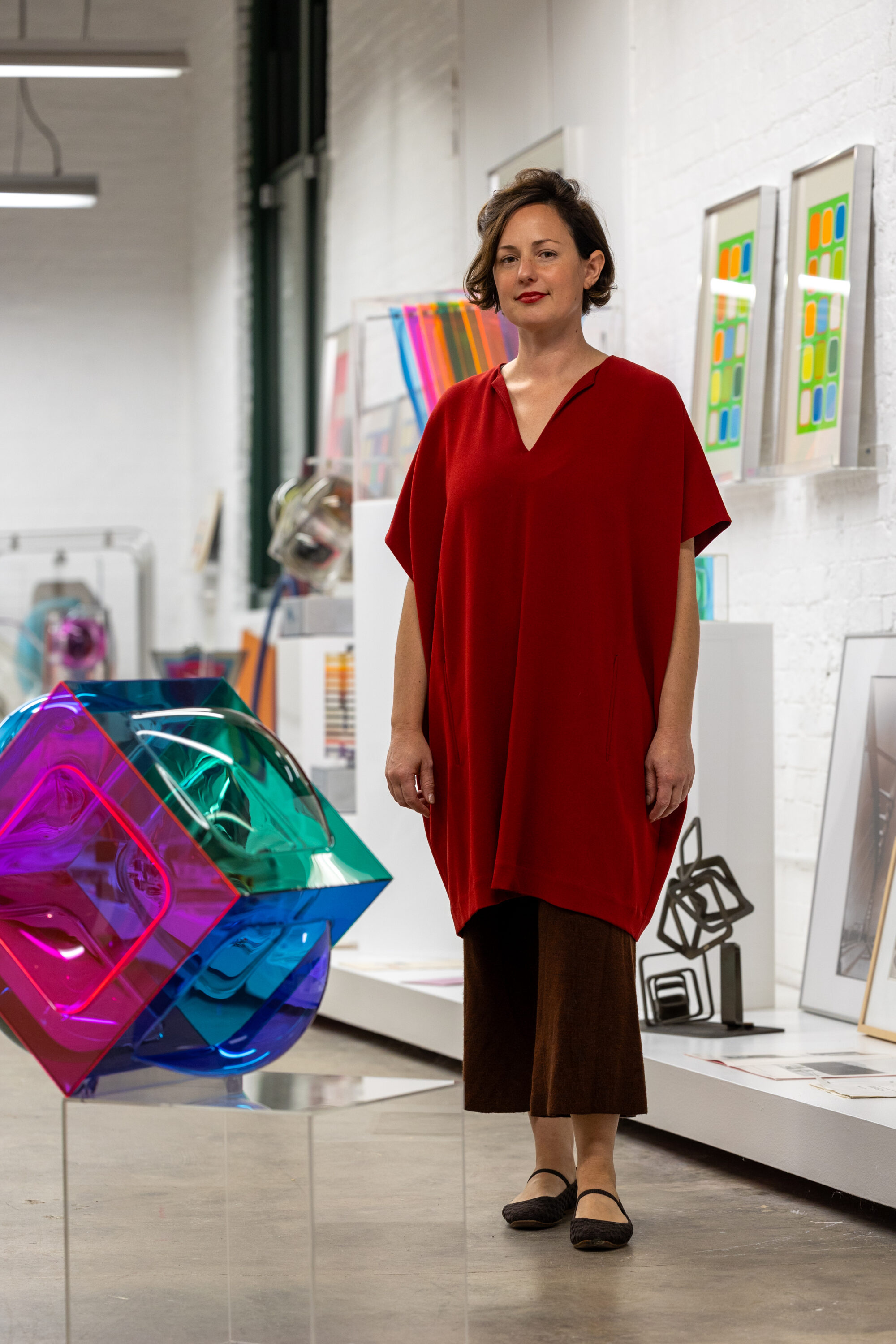
I want to throw it way back—where did you grow up, and how did your childhood influence the way you think about art and creativity?
I was born not far from Pittsburgh, in Indiana, Pennsylvania. When I was about three, we moved closer to the city. My mom had this wanderlust that influenced me. We were going to museums but also neighborhoods and just walking around with that same sense of wonder and exploration—looking at and absorbing things. We would both go on to explore far and wide, but still, I’m fascinated with how much Pittsburgh has to offer.
It’s nature-nurture. I’m a big believer that some of us see the world in an aesthetic way. As a kid, I was looking at road signage, thinking about the color and the composition. And then observing things we would do, places we would go—I wonder how that’s done. Balancing a little bit of logistics and creativity and just being observant and curious.
This blend of logistics and creativity seems to be the through line of your career, too. Can you talk about how it’s played out in your work?
Yeah, I headed out of Pittsburgh to SAIC, the School of Art Institute of Chicago, to pursue a studio practice of some sort. But even there I was getting antsy, thinking, I might have a different relationship with this work and it’s not going to be making work in the studio. I was in the inaugural program for Visual & Critical Studies, so it was a lot of thinking, like, What does this mean? Let’s untangle it together.
Here’s where I ended up eventually feeling like I really had a place. I would see projects happening at an institution or a gallery. Often, many of my past classmates and colleagues would work for said entity. And I saw a lot of compromises being made [by artists], sometimes because the artist is brilliant at X, Y, and Z but not able to materialize the communication for themselves. I was observing this, so I got started in studio management. That gave me this lens into working with many different people, and what it looks like to see the idea being born in the studio—talking day and night with the artist and whoever’s supporting us—before it goes out to the world.
Most of what I’ve worked on has had an experiential element. We’re not finishing the paintings, shipping them off, and making sure that they’re hanging correctly. It’s really complex, multifaceted work. It may engage the audience in a way that is atypical—immersive in that there’s some type of participation or interaction. So that means a lot of production and communication. I wanted to support artists, and I saw this opportunity: How might I help ensure that their idea is arriving to a public audience in a way that is cultivated and supported by clear communication and production? I tried to provide that role in a variety of projects and studios.
Is there a particular artist or show that really felt successful in terms of what the artist was hoping to communicate and how you were able to help them do that?
Yeah. This was a long time ago, but for dOCUMENTA, which happens in Kassel, Germany, every five years, I worked with French artist Pierre Huyghe. His installation called Untilled—a play on Untitled—encompassed a large outdoor space in the park. It involved people and animals and plants, creating this whole environment. It wasn’t static or complete; it was going to transform in ways that nature does. It was this interesting tension between what we could control and implement—creating from nothing, just a dirt site—and what we couldn’t control. We spent long months, both at his New York studio and then on site in Kassel, working through that as a team. Sometimes the successes are complicated, because it changes form so many times on the way there. But to have the opportunity to be very hands-on in that change alongside the artist, to me, is the difference.

Art and architectural preservation and advocacy are a huge part of your work. Can you trace that interest to a certain place or experience? And have you had any wins lately?
I got the architecture bug in Chicago because [it has] incredible architecture from every period, but especially modernist style. So I’m there, falling in love with not just the buildings but also the plazas and the interiors or the public art that would come with that. My work looks at public art as inextricable from a historic site. It was often designed for the site or commissioned, so to me, it’s just part of that setting.
One recent success was a large-scale modernist mosaic that was here in Pittsburgh, near the U.S. Steel Building in this pedestrian tunnel. Virgil Cantini, the artist, came to Pittsburgh from Italy when he was quite young, and he built his artistic career here. The city was building a new green space, and as a result, they were not going to relocate the mosaic but just call it a loss. If you’re not paying attention, these things can go away while you’re sleeping. With a team of people and some complicated processes of historic preservation, we were able to have it removed, restored, and relocated to a nearby site.
Why do you think it’s important to preserve works like this? What do you think we gain as a culture by saving these sorts of things?
A firsthand tactile experience of a work that has volume and dimension and texture and patina is always important. Piles of photographs and click-through slides, no matter how wonderful the photographer, just become the documentation. And documentation is hugely important for preservation—it is advocacy. But for me, who loves shadow playing on the building, the color, the feel, the whole atmosphere, that’s where it sinks in. That’s how architecture got to me. When I think about how meaningful that was for me and for others, then it becomes a tool for education. It resonates and has an impact in ways that documentation does not. I’ve learned so much from my colleagues in preservation, and some might have severe perspectives: “We should save it no matter what.” However, I think it’s important to engage people from a lot of different professional backgrounds and perspectives and strategies. Why does this site sing for me or for our community? How do we convey why this is important? Or ask, Is it important? And then let things unfold.
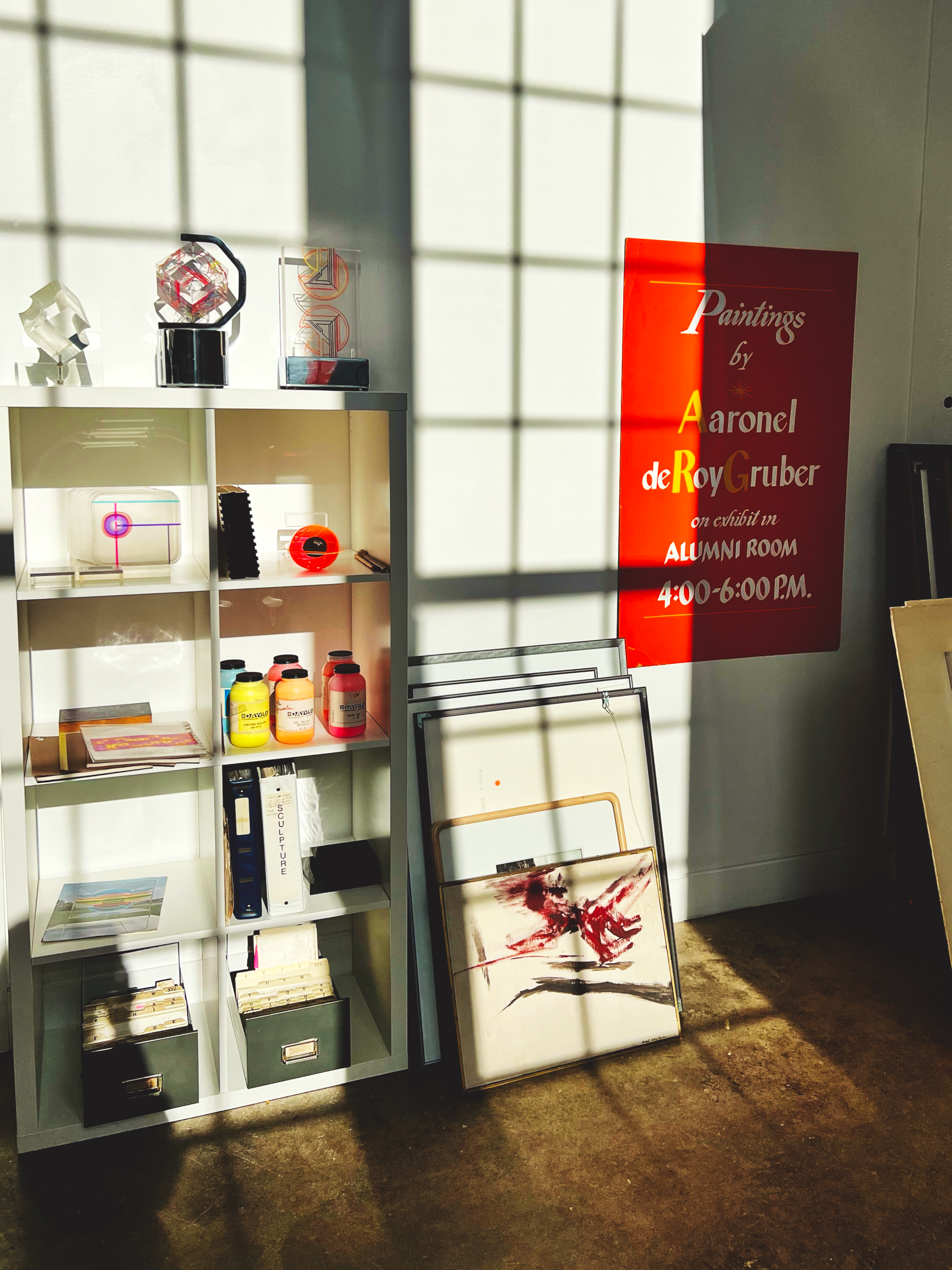
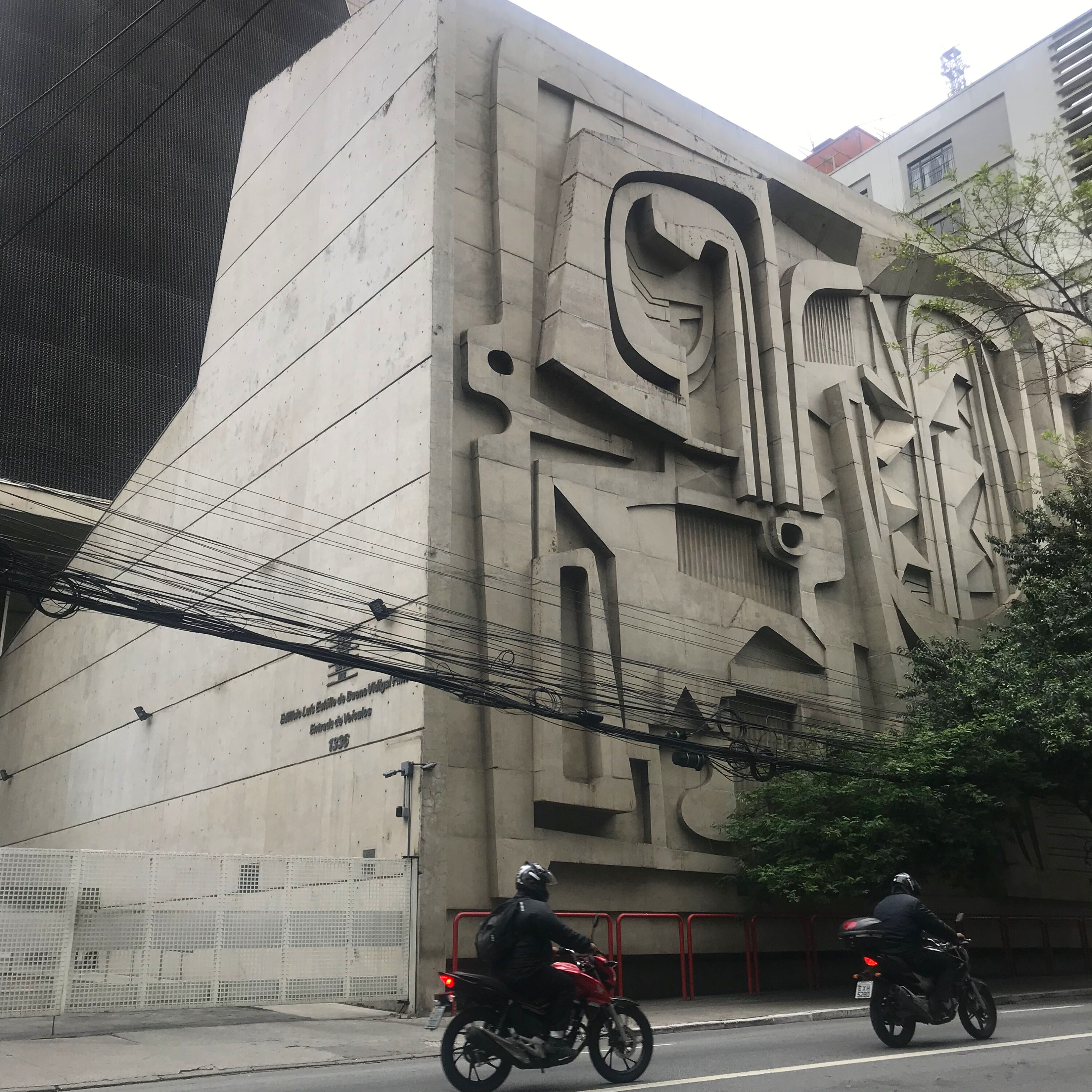
Preservation is kind of baked into culture in other areas of the world. In America we seem to have a different mindset—out with the old, up with the new. It must feel like an uphill battle at times.
Oh, yeah. I’m a tough cookie, but it becomes really emotional, and you really want to see these efforts be a success so that someone else can feel that feeling I did when I saw that space or that place. I was warned early on it can be tough work, but then when you have the wins, it’s very meaningful.
What else does your preservation work entail, beyond rallying behind particular buildings or artwork?
One thing I’m working on is a database of public art sites in the U.S., especially modern and abstract sculpture, because when I travel, it’s something I look for and love to stumble upon. Upon joining the board of Preservation Pittsburgh, I founded the Pittsburgh Modern Committee—a working group that looks at postwar architecture, usually 1950s to even the 1980s, and builds resources around it. A lot of what we do is public programming tours. We have a series of maps called Modern Survey Pittsburgh, where we go by neighborhood and detail 20 or so sites, encouraging self-guided exploration of architecture, interior lobbies, and public art. Developing things like that helps us celebrate what we have while we’re behind the scenes working on advocacy around select projects.
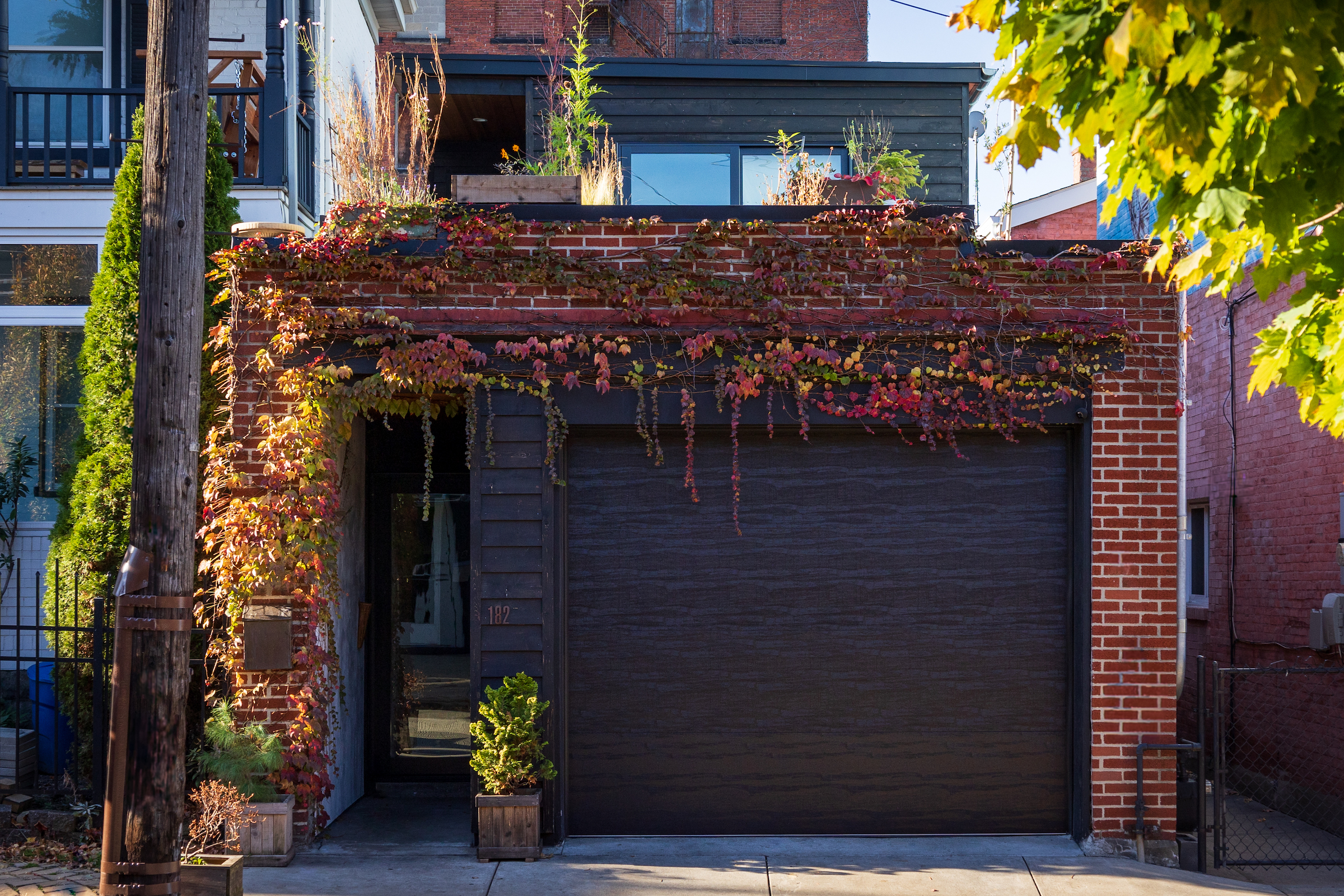
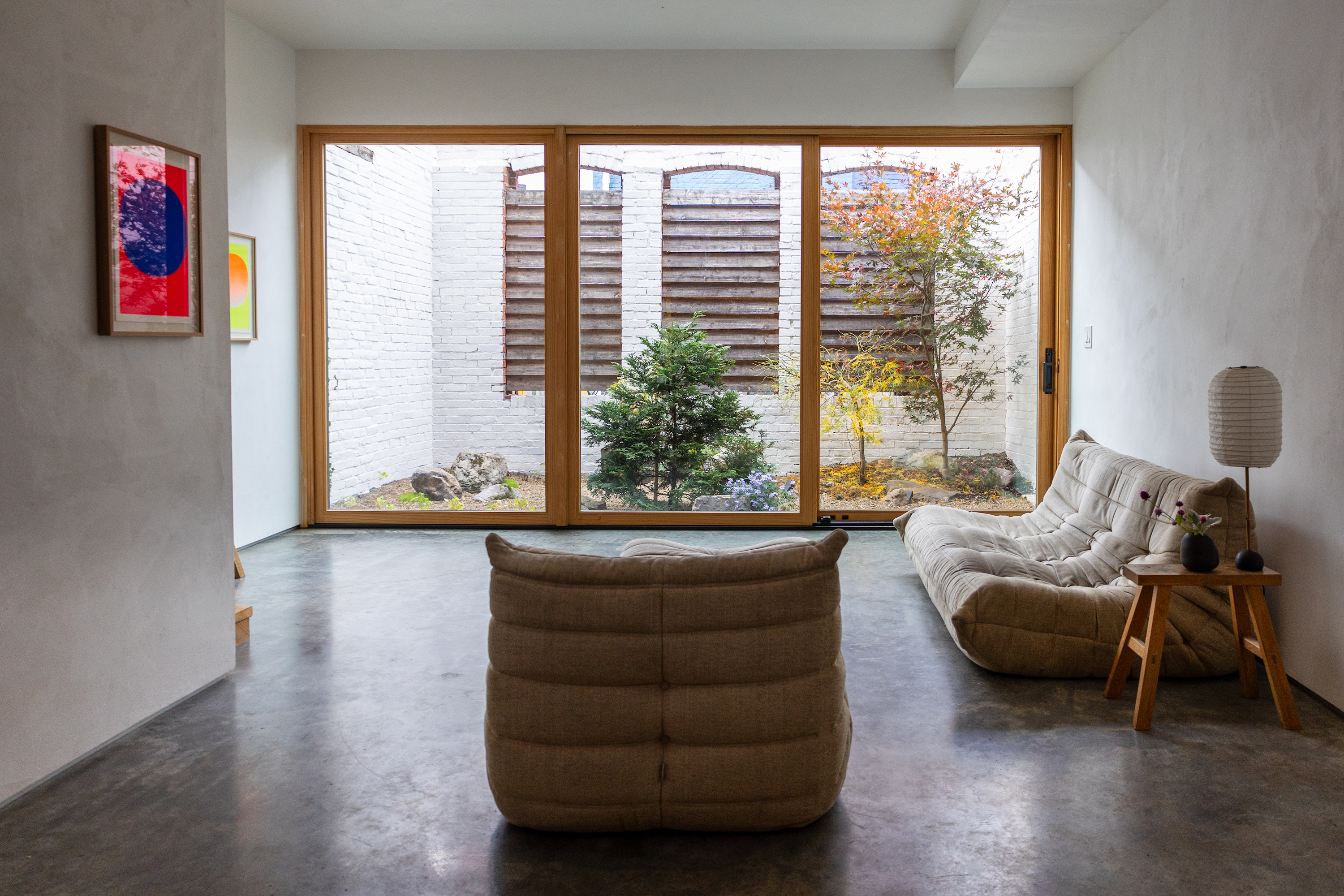
I’m glad you mentioned your travels—you’ve been all over the world! What countries have inspired you most?
Mexico, Brazil, and Cuba—places where there’s incredible flora and fauna that’s really lush and dense and colorful, combined with modern architecture. I practice ikebana, and I love the natural world, so places where climate allows that interior-exterior relationship to be really beautiful resonate with me. Roberto Burle Marx of Brazil was a landscape designer. Visiting his estate, there’s this sense of the natural world that meets a true artist and designer’s vision for how they’re going to live. Lina Bo Bardi is a designer I’m really intrigued by. Her home and other public sites and architectural designs really moved me. And [Joan] Miró’s studio and home in Mallorca, Spain. Those are the places that will stay in my heart. I’m so grateful to the people and the organizations that make it possible to visit a preserved studio or estate. Yes, the buildings, but the stories and the insides and the people and the places and the plants and the holistic thing is how I want to feel those spaces. They’re hard to preserve, and it’s just so magical when you can be there.
Tell me about your ikebana practice! How did you get into that?
I have a lot of books, and 99 percent of them are vintage. I had an old book on ikebana, published in the ’60s with these beautiful technicolor plates of finished ikebana arrangements. And I’m like, “Wow, I’m so intrigued with this, I need to figure out why.” It was the same with architecture. It’s not enough to just love it—I need answers about why this is having such a feeling for me. There’s a Pittsburgh chapter of Ikebana International that started in 1959, and it’s this incredible community of mostly women that have been practicing ikebana together. Most people associate ikebana with very traditional arrangements; the Sogetsu School of Ikebana is a more modern, avant-garde approach, founded by a sculptor, the son of an ikebana master. I was like, “This is the school for me,” because it’s all the things—it considers design and space and sculpture in one. I started practicing in 2018, with Sogetsu Pittsburgh, finally returning to a creative practice myself, though I consider all my work a creative practice. I very clearly feel and see how it all connects—my work at the foundation and with preservation and design, and ikebana, and I have these ideas for the near future. I see the matrix super clear, but I’m always trying to explain it. [laughs]
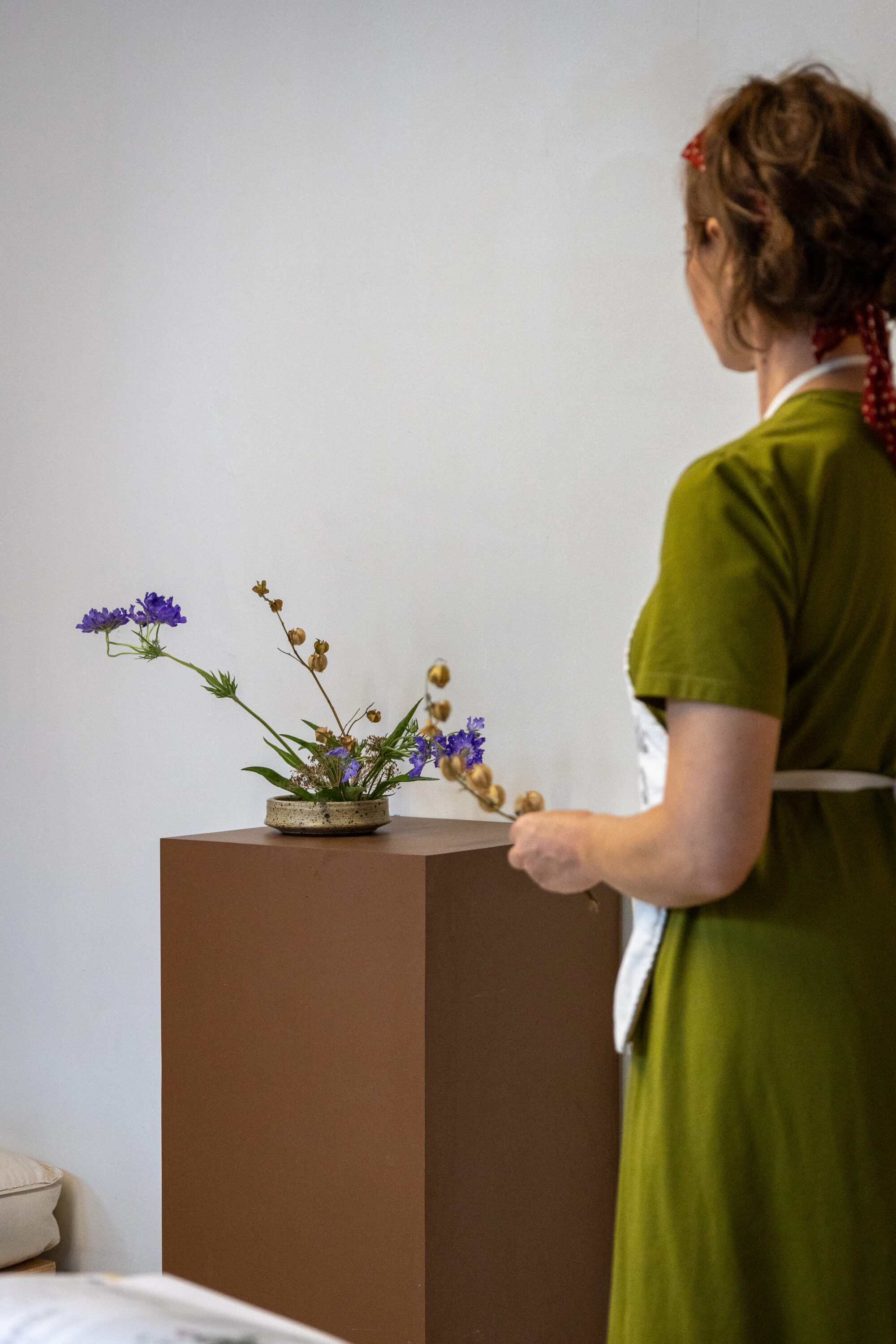
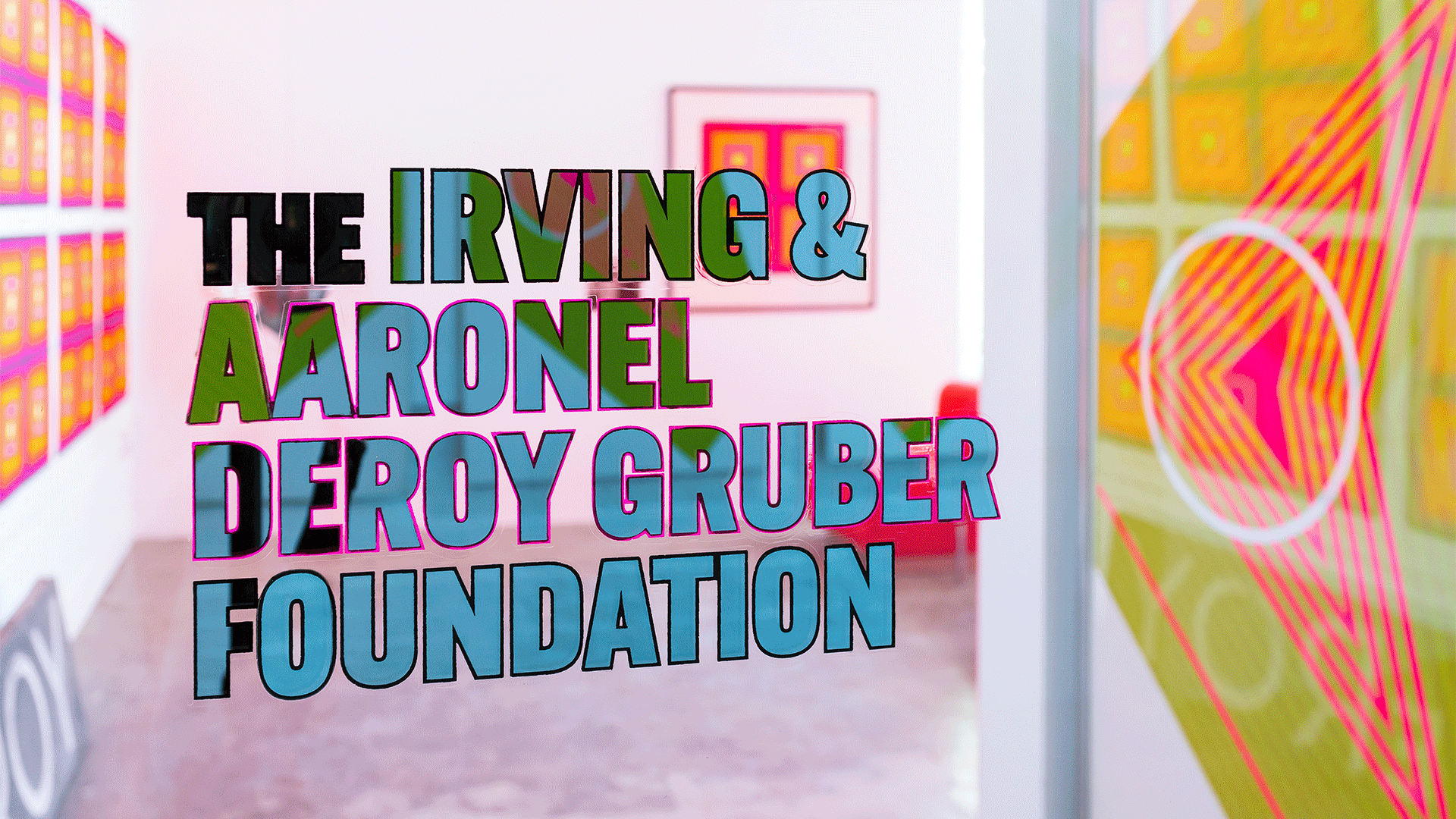
Your position at the Aaronel deRoy Gruber Foundation seems like a natural culmination of everything you’ve done—working with living artists and translating their ideas and your work in preservation. This combines those interests and skill sets. How did you arrive at the foundation?
I remember this moment when I went to the Westmoreland Museum of American Art, not an hour from Pittsburgh. I’m meandering through the galleries and I see a late-1960s Plexiglas sculpture that I recognize is by Aaronel deRoy Gruber. There was this elderly gentleman sitting a few feet from the sculpture, just staring at it. And it almost brought me to tears. I’m like, Yes, I want to sit next to him and just stare at this work. I had just come back to Pittsburgh. I had had all these years in Chicago and then New York, where I finished my graduate degree in arts management. And I’m like, “I’m going to bring this toolkit to Pittsburgh, and I don’t know what’s going to happen.” I’m not the type to have all the things lined up, I just went on a feeling. Seeing that piece reminded me of Aaronel deRoy Gruber, a decidedly Pittsburgh-based artist.
Can you share a bit about her?
She graduated from what is now Carnegie Mellon University in 1940. She was studying fashion and art, and she connected with artists like Samuel Rosenberg and early modernists in Pittsburgh. So she continues spending time with them and pursuing a practice on her own, first in mostly abstract expressionist painting. She’s eventually a mother of three, and her husband was co-owner and operator of a metal manufacturer in Pittsburgh. She pursues sculpture, first in metal, and then she begins exploring Plexiglas, manipulating that material by heating it and vacuum-forming it into these volumetric and sometimes kinetic sculptures, one of which I saw at the museum that day. She exhibited all across the United States and internationally. She saved everything—we have catalogs from her shows in Rome and Madrid—and she’s in permanent collections here in the region. She was well known in her time, but when I saw that sculpture and was reminded of her, as a student of art history, I know that we generally don’t know her name.
So I just started exploring, and I found the foundation and talked to her family. It was just good timing. Together, we developed what this executive director role would look like. The mission is twofold: supporting the arts in Western Pennsylvania—Aaronel set up that parameter. And to look after and cultivate her creative legacy using the collection and the objects archive she left us. We have her vacuum-forming molds, her Rolodex, her artist notes, her journals, her old cameras, you name it. I spent many, many months moving everything from her last working studio to this space, which is our headquarters but also feels like a gallery space. So we have a rotating cast of characters of all the mediums she worked in. But to me, she hit the sweet spot with her 1960s and ’70s Plexiglas studio sculptures and wearable pieces. Every day here is a learning experience; there’s an endless amount to explore. But my goal is reigniting how we will fulfill that twofold mission.
I’ve typically worked with living artists, and I didn’t meet Aaronel during her lifetime, so I’ve been getting to know her through this collection. I feel very blessed to be trusted by my colleagues and her family to come up with new ideas of where I think her work might resonate and how we can share it. If we didn’t have this material, this preservation, it would be a very different experience of telling her story. When I give talks on her work, it’s like, “Here’s all these beautiful slides, but please come into this space because right now, the light’s playing with the Plexiglas sculptures, and there’s kinetic action going on, and there’s archival material we can touch and look through.”
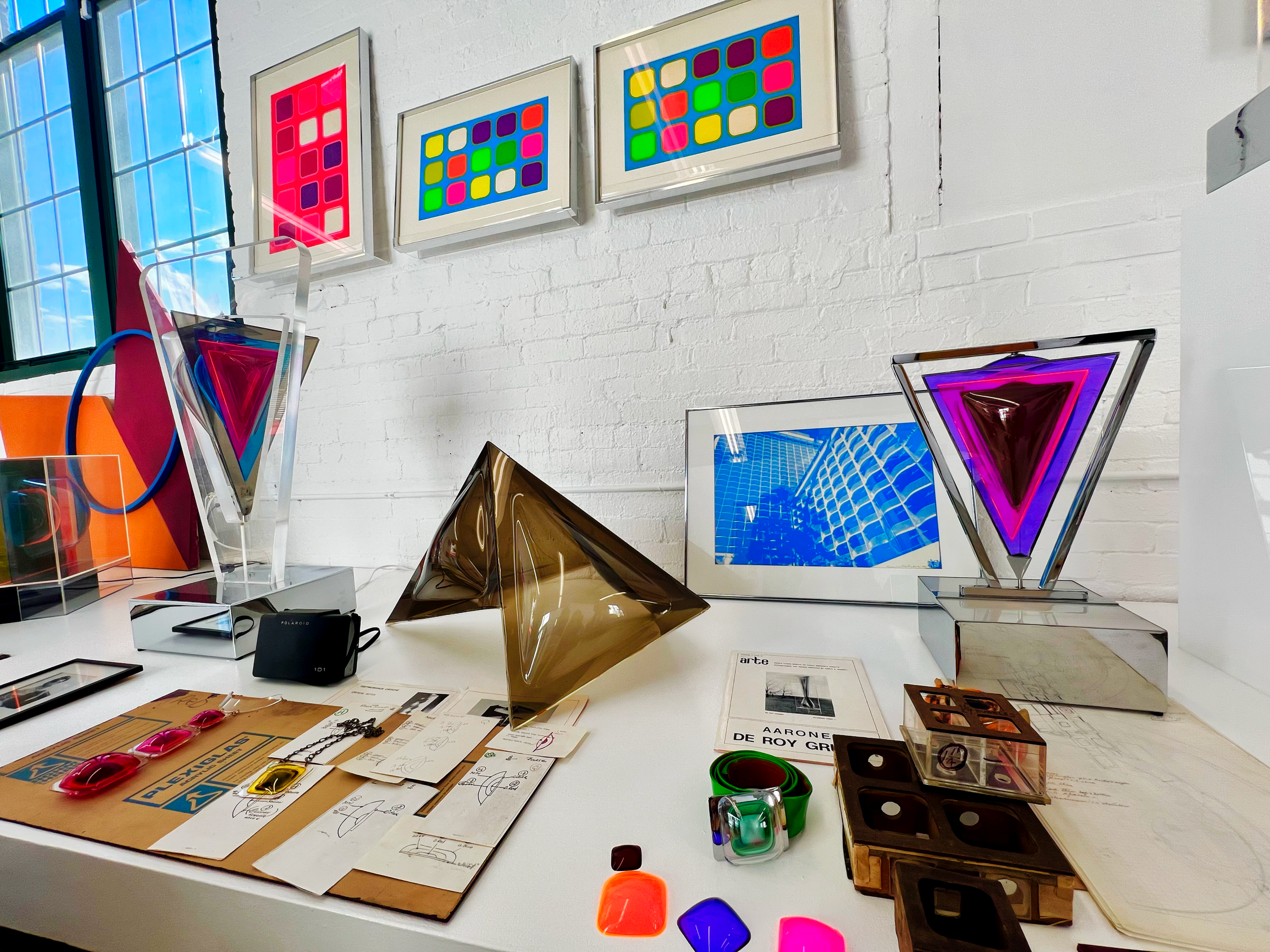
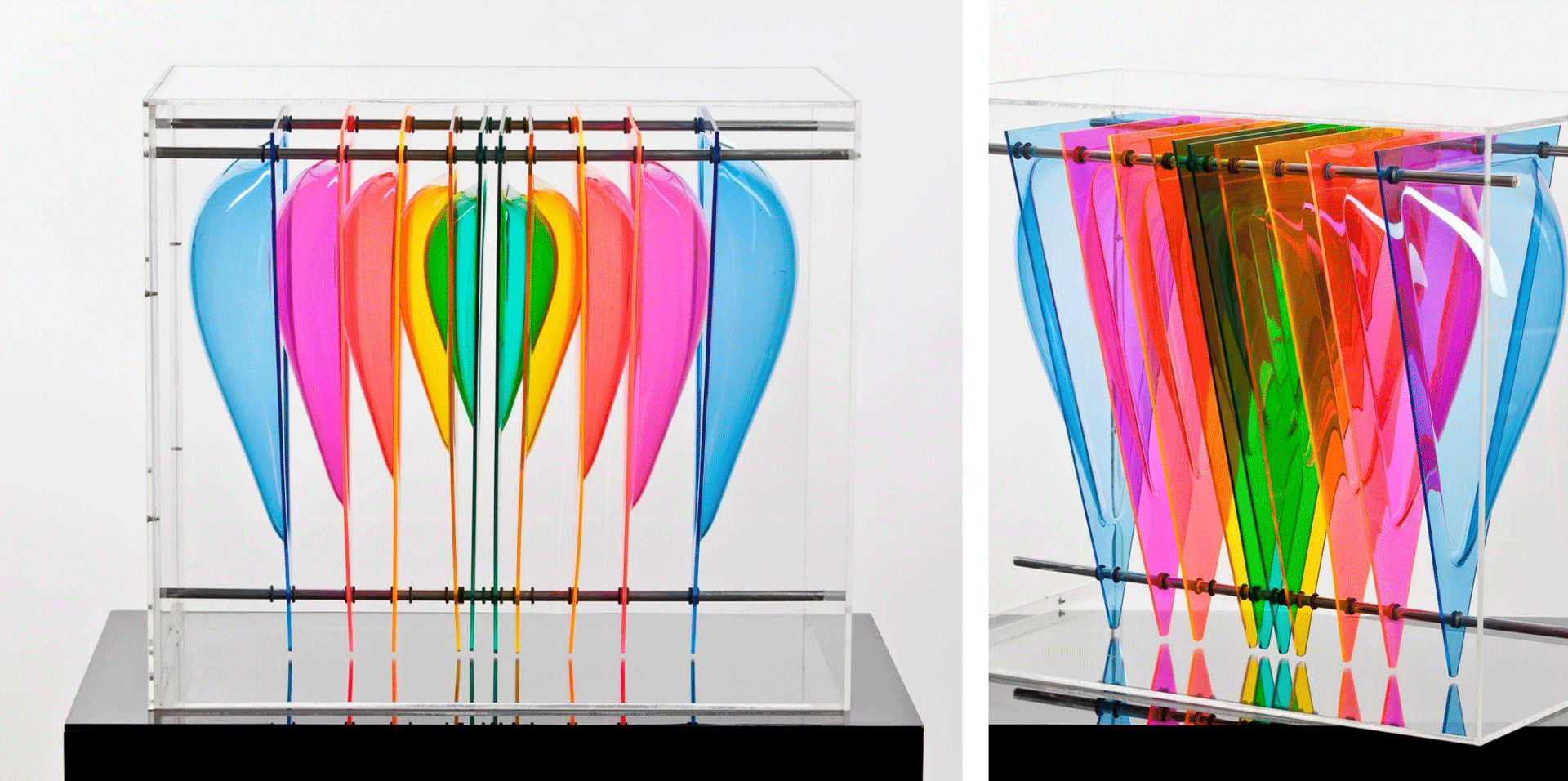
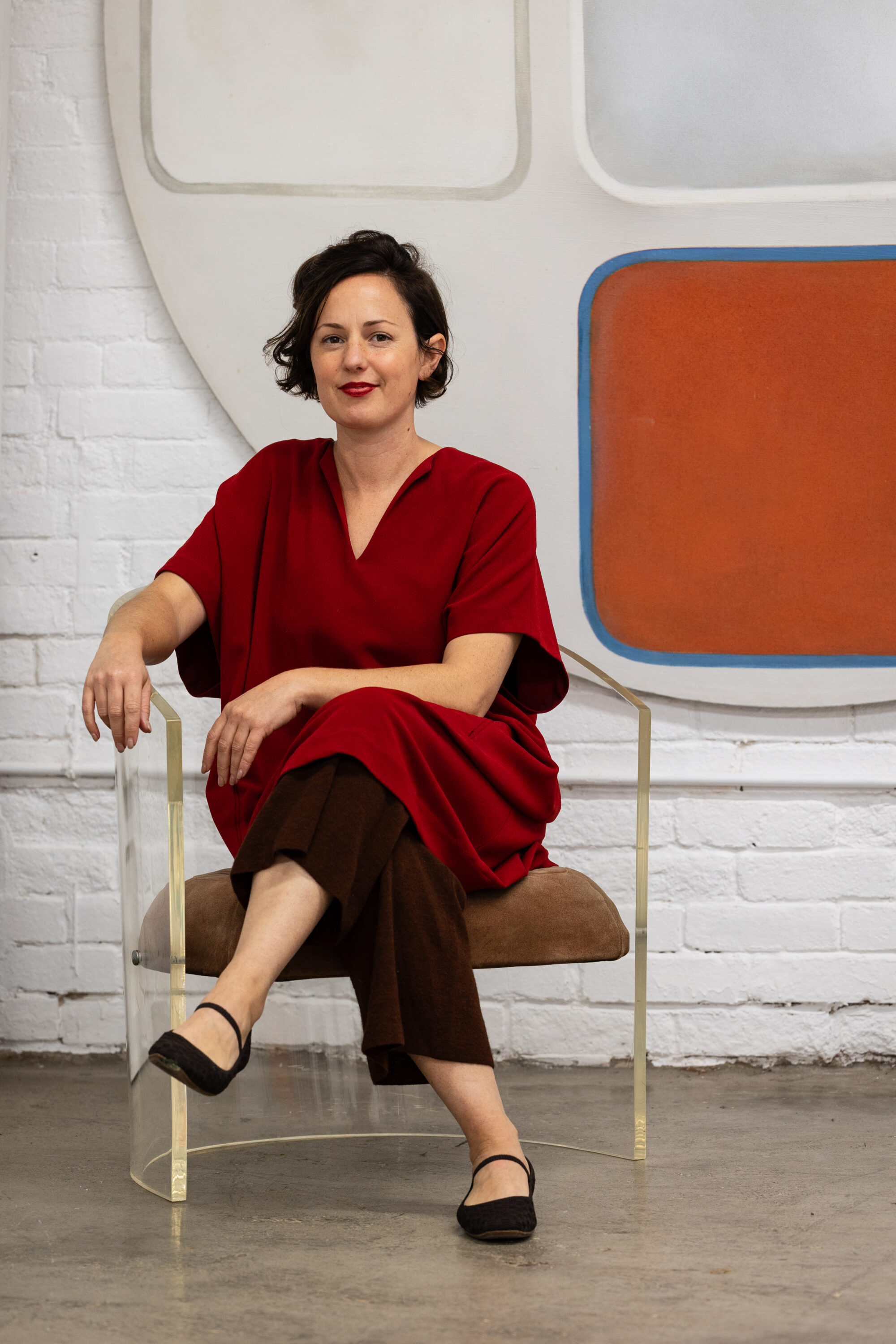
I have just one more question, and it’s a big one: What has been your greatest moment of discontent, and what came out of it?
Being extensively involved in the contemporary art world, and naturally, with practicing artists, there’s the saleable aspect. And though I wasn’t working directly in the art market, every facet of an individual who’s pursuing a career in art is touched and affected by that. There was a moment when I just reached a sense of feeling depleted by the contemporary art world and art market, and not just in those compromises that I mentioned artists make. It led me to focus on projects that were immersive and participatory, experiential—where the artist is creating some type of realm or atmosphere or situation, and they’re giving and offering and activating something that someone’s going to walk away with, and it doesn’t involve a transaction of money and a money-assigned value. It reminded me that I want to put my time and work where it’s going to reach people in a way that can just be experienced and not necessarily possessed. So in a way, it was good. It led me to clarify what type of art production and support I wanted to do.
One other aspect, being back here in Pittsburgh: There are a lot of these kinds of creative individuals and stories that happened here, and it’s inspired a sense of “Let’s research these and think about them together and create the content that allows them to be shared in a bigger way.” I was disappointed as to why these Pittsburgh-born stories that I know deserve and could resonate with a much wider audience weren’t being worked on and celebrated, which led me to say, “Well, darn it, I’m staying here.” It is what keeps me passionate and motivated to keep Aaronel’s material and story, and also continue to connect the dots and see how else I can help others appreciate those stories. So yeah, those moments of disappointment or realization, ultimately, if you can remain calm, they simply help you clarify where you want to put your time. I used to be open to everything; I’m finally in a place where it’s much more fine-tuned. And you have to go through those patches of it not feeling so good to get there.

